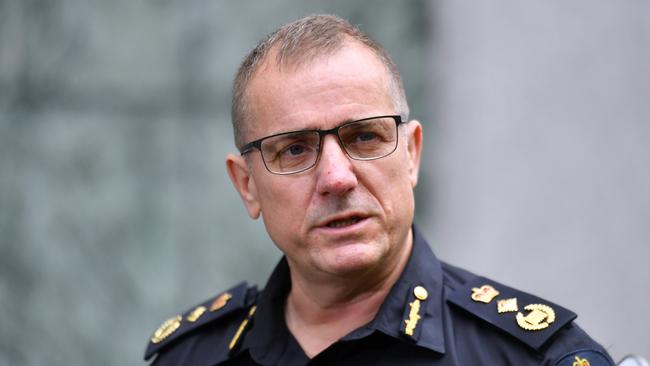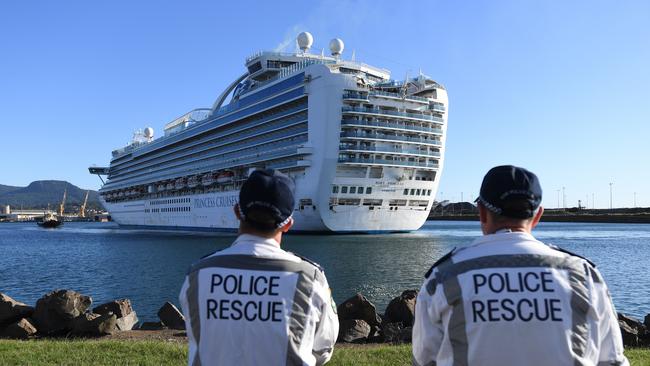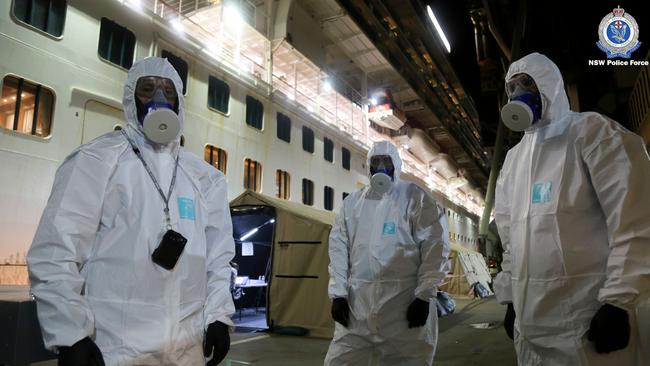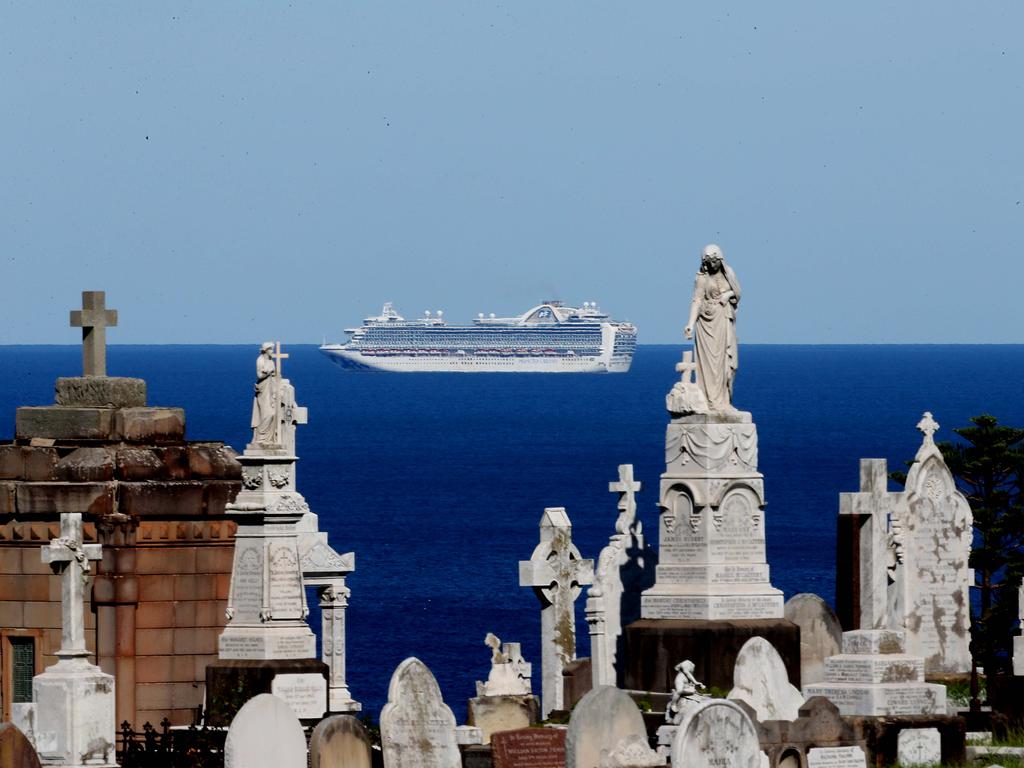Coronavirus: border farce at porous ports
Border Force boss Michael Outram has called for a ‘hardening’ of biosecurity at Australian ports in the wake of the Ruby Princess fiasco.

Leading national security official Border Force boss Michael Outram has called for a “hardening” of biosecurity at Australian ports in the wake of the Ruby Princess fiasco, in which scores of passengers infected with COVID-19 were dispersed across the country.
Agencies examining the conduct of the ship’s operator, Carnival Cruises, are understood to have been left astonished at the lax approach to overseeing the integrity of the nation’s seaports compared with its international airports.
Some officials believe serious oversights that led to hundreds of coronavirus infections across the country will force a major overhaul of biosecurity arrangements at the nation’s ports.
“Ports are treated very differently to airports,” one law enforcement told The Australian. “Cruise ship captains are given status of absolute trust” in marked contrast to international airline pilots.
“There are no biosecurity checks … no records checked … the public would be shocked by the failings and how so much trust is placed in cruise ships.”
Mr Outram said biosecurity needed to be beefed up to “create a hard border’’ capable of protecting citizens from future outbreaks.

He emphasised that he was not criticising any individual agency or state, but he said the incident had also revealed the need for a central point of responsibility, with ongoing confusion about how disease control was managed at ports, and by whom.
“Any system where it’s difficult to locate accountability, you’re asking for trouble,’’ he said. “In a pandemic like this the federated arrangements that we have around our seaports and airports need to be significantly amped up and hardened.
“To do that you need somebody in command of resources, to create the hard border and as little separation as possible between the decision points.”
Mr Outram’s comments came as the number of deaths linked to the 18-deck liner rose to 16 at the weekend, following the death of a 74-year-old Adelaide man overnight on Saturday. The ship, moored in Port Kembla on the NSW south coast, has been connected to more than a quarter of Australia’s 59 COVID-19 deaths.
The Ruby Princess disembarked 2700 of its passengers on March 19 even though several were displaying flu-like symptoms consistent with the coronavirus. Despite this, NSW Health cleared the boat for docking, having deemed it “low risk’’.

A total of 364 passengers and 52 crew went on to develop the disease and the boat has become the single biggest source of COVID-19 infections in the country.
The incident is the subject of a criminal investigation by the NSW Police Force amid concerns Carnival Cruises may not have disclosed the extent of the problem.
The majority of Australia’s confirmed cases have come from overseas, making border capabilities central in protecting citizens against any future pandemic.
Responsibility for biosecurity at the nation’s border rests with the Department of Agriculture and with state health authorities that provide resources, mainly in the form of doctors, nurses and paramedics, to assist with disease control at ports and airports.
Critics say the arrangements are haphazard and their effectiveness dependent on the willingness — and capacity — of state health authorities to assist.
The pandemic has also exposed differences in the way states and port authorities manage risk at maritime borders, particularly as it relates to cruise ships, which have long been vectors for mass disease, thanks to the large number of passengers and their proximity.
NSW health authorities assessed the risk aboard the Ruby Princess according to information supplied to them, whereas Victorian teams of clinicians have been sent aboard boats to gauge risk. Similar discrepancies occur in relation to cargo ships.
Different ports have imposed different rules about when and how crew can disembark to unload cargo despite the risk being the same.
The differences have resulted in some vessels choosing at which ports to unload based on convenience and cost.
The head of the Risk and Resilience Program at the Australian Strategic Policy Institute, Paul Barnes, said there needed to be a sharper focus on operational matters at the airports.
He said authorities needed to consider measures such as thermal scanners, which, while not perfect, would flag passengers with high temperatures as potentially requiring closer scrutiny. “We need to be able to escalate port screening,’’ Mr Barnes said. “That could mean more detail on people boarding overseas or passenger manifests of shifts. We need more detail.’’
Jacinta Carroll, director at the Australian National University’s National Security College, said the patchwork of arrangements worked fine when the system was not under stress.
“What this has shown is the way biosecurity matters were being prioritised wasn’t as high a priority as it should have been,’’ she said. “But in future it will be.’’
Ms Carroll said there was an obvious need for greater co-ordination among state and federal authorities around biosecurity. “When Home Affairs was set up the thinking was you would have a central agency that looks at domestic security,’’ she said. “It doesn’t mean they take over delivery but they can better co-ordinate biosecurity.’’







To join the conversation, please log in. Don't have an account? Register
Join the conversation, you are commenting as Logout